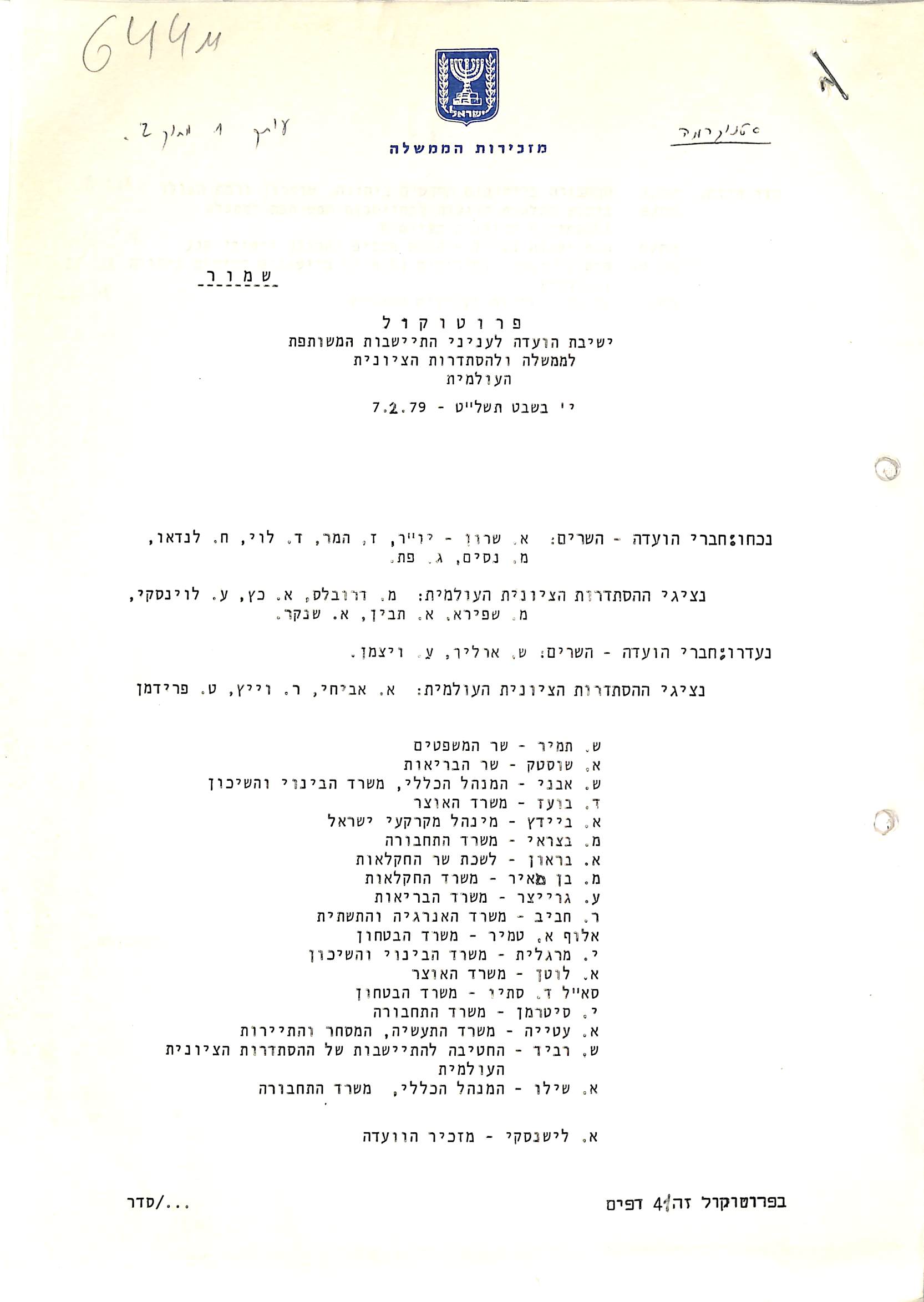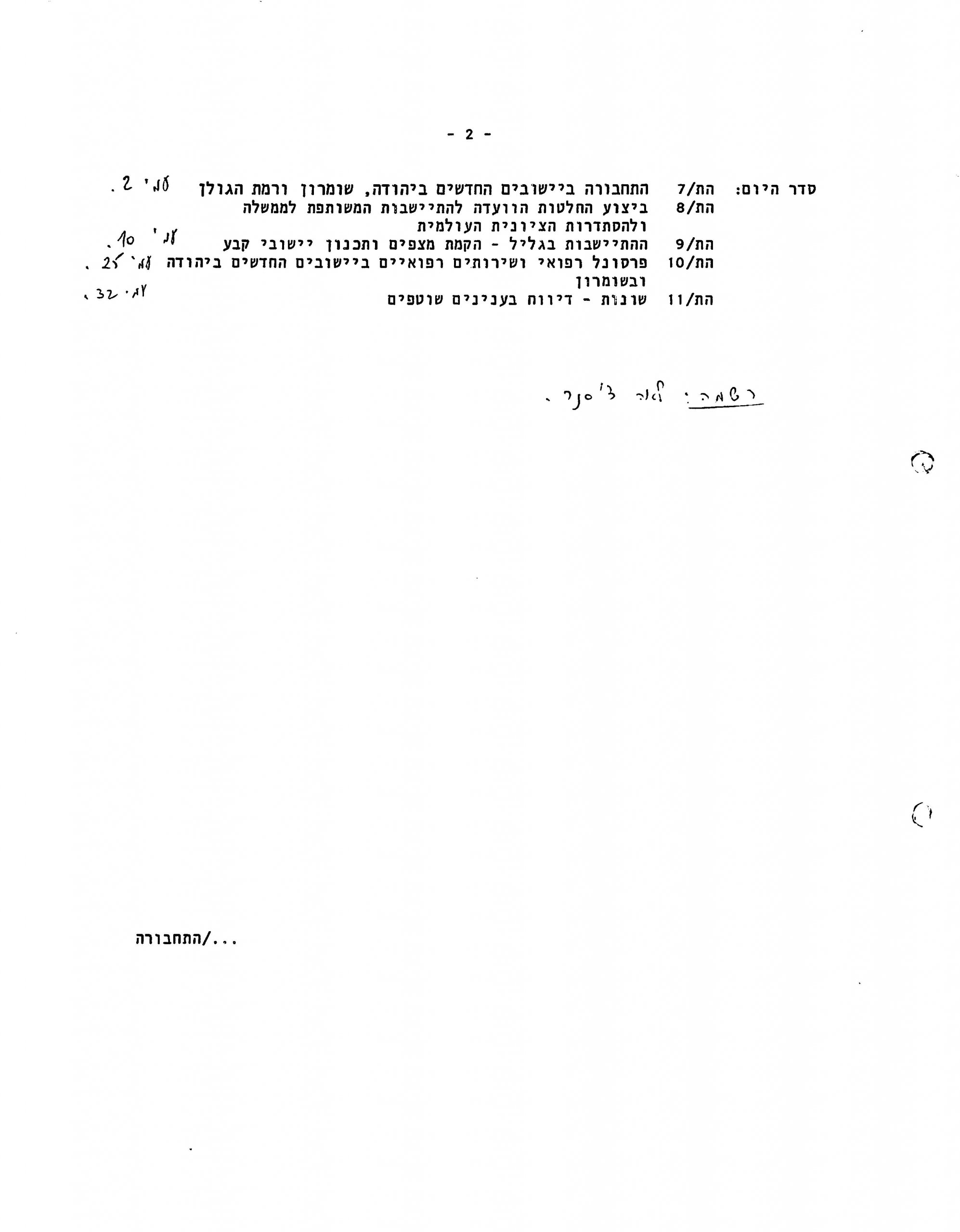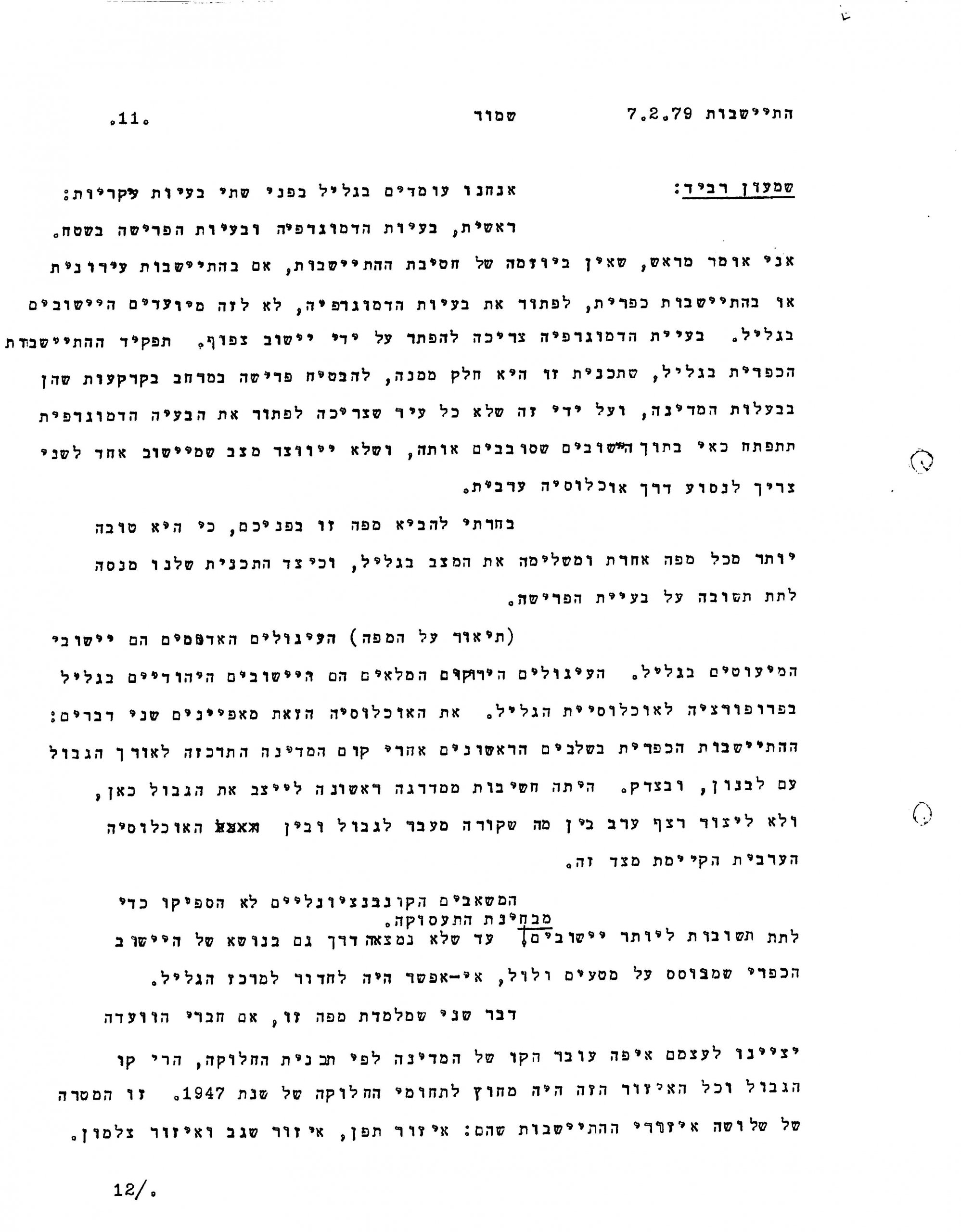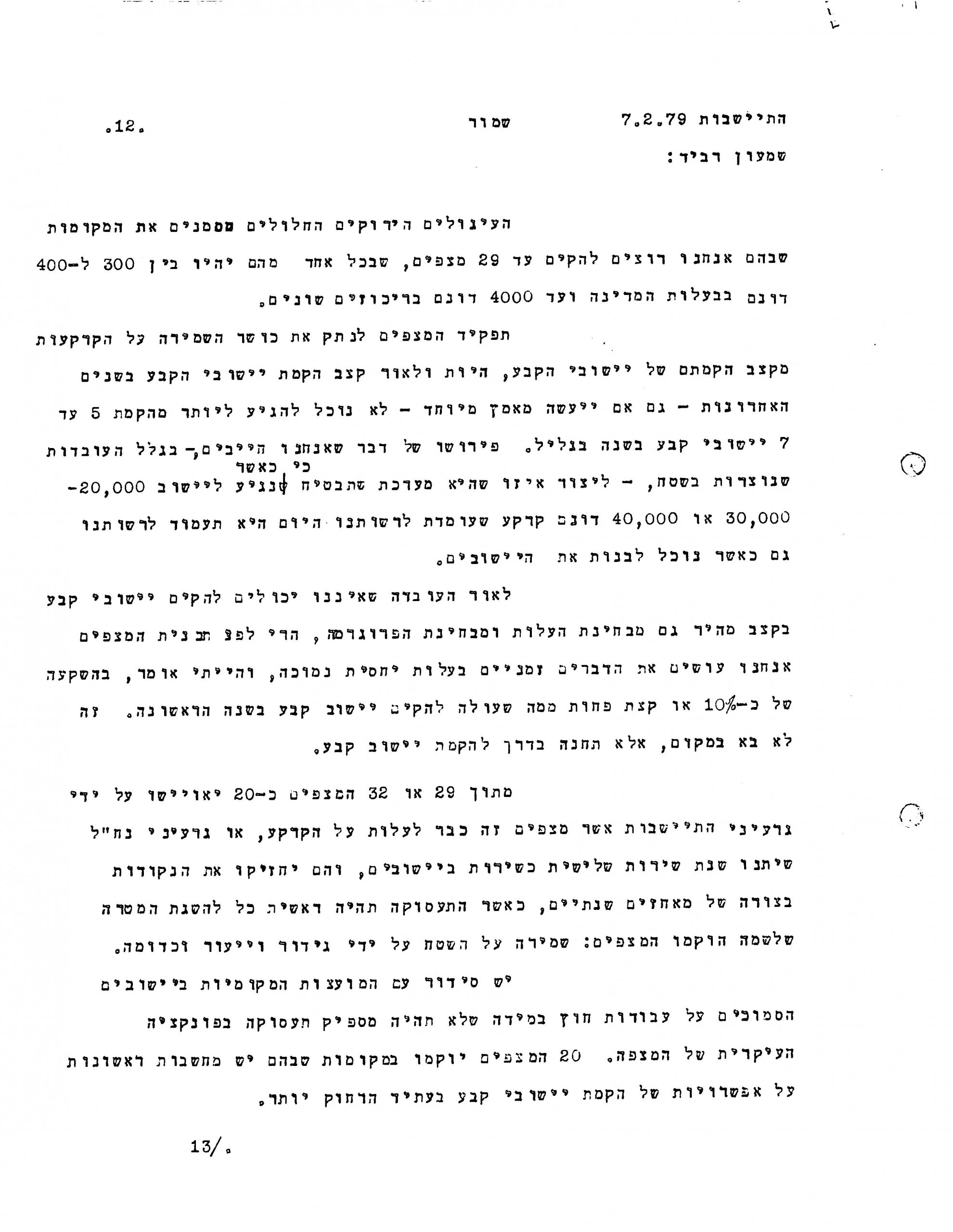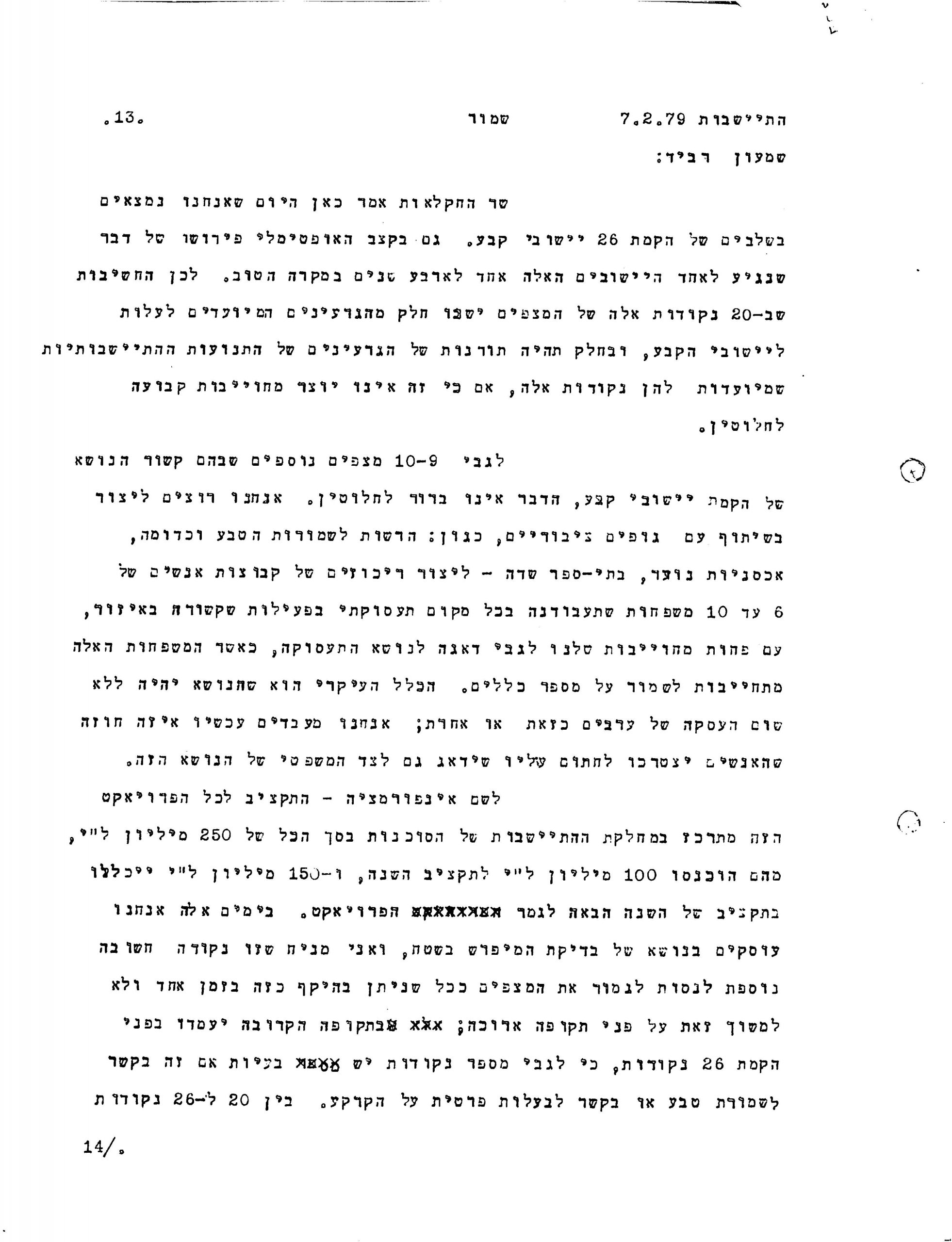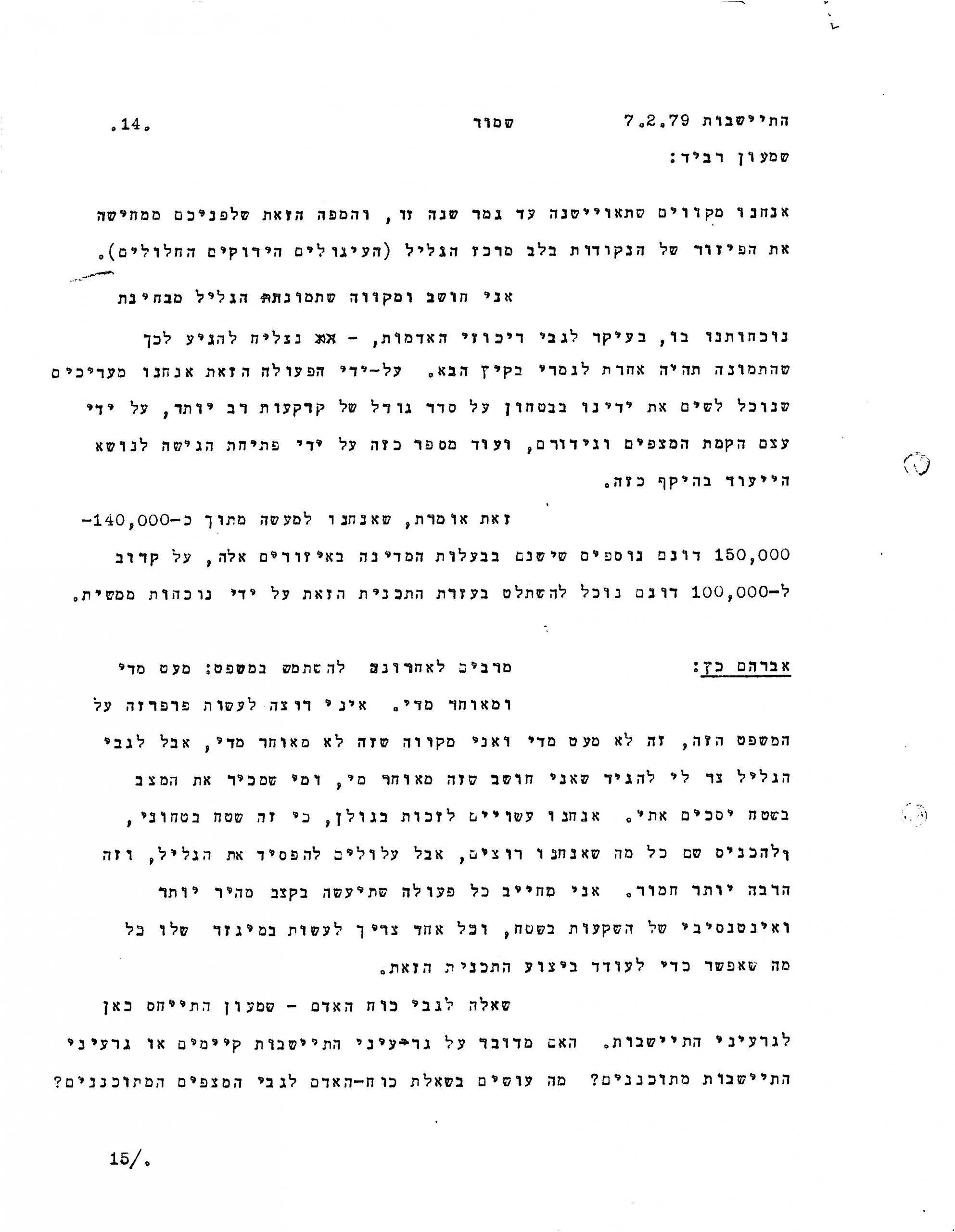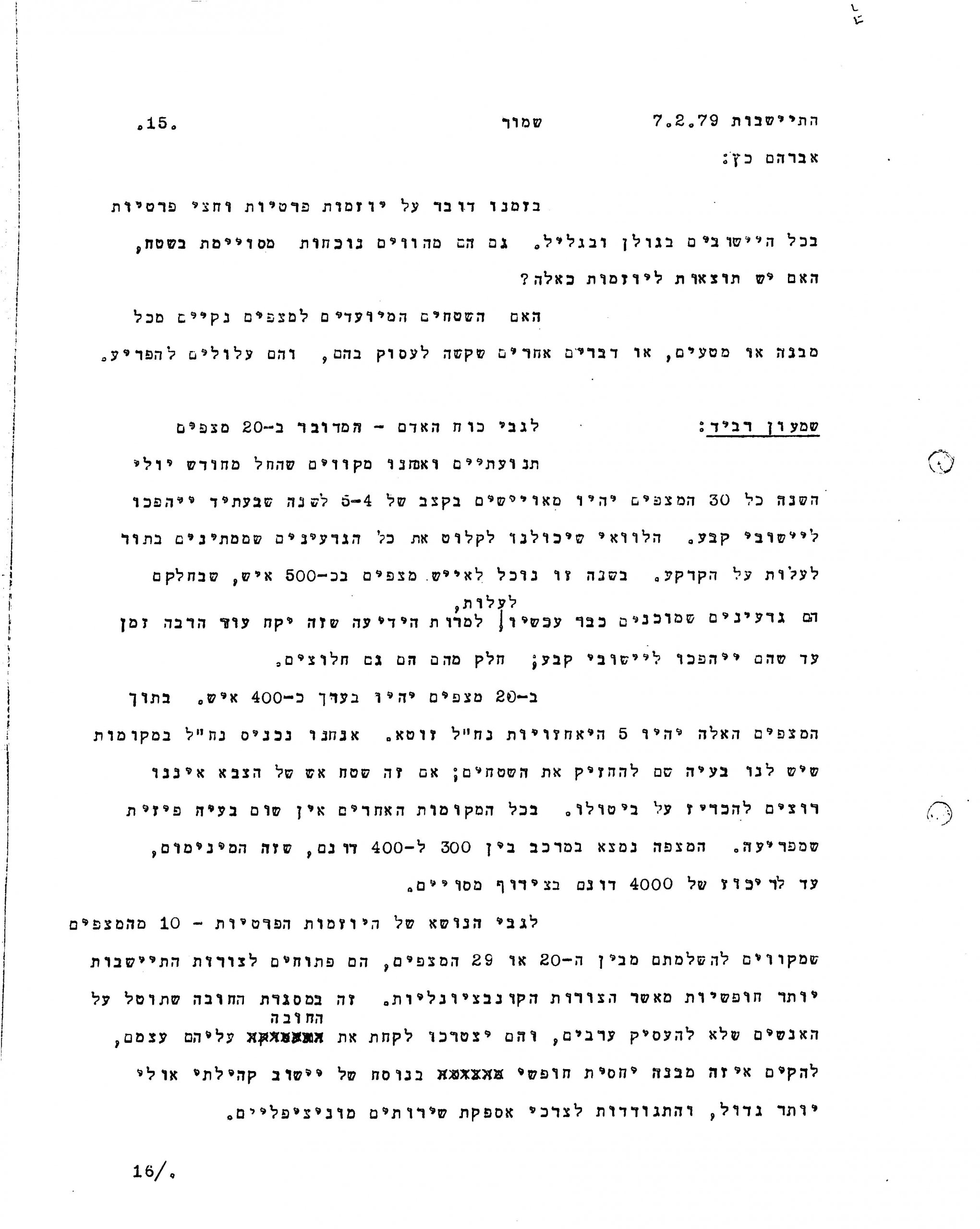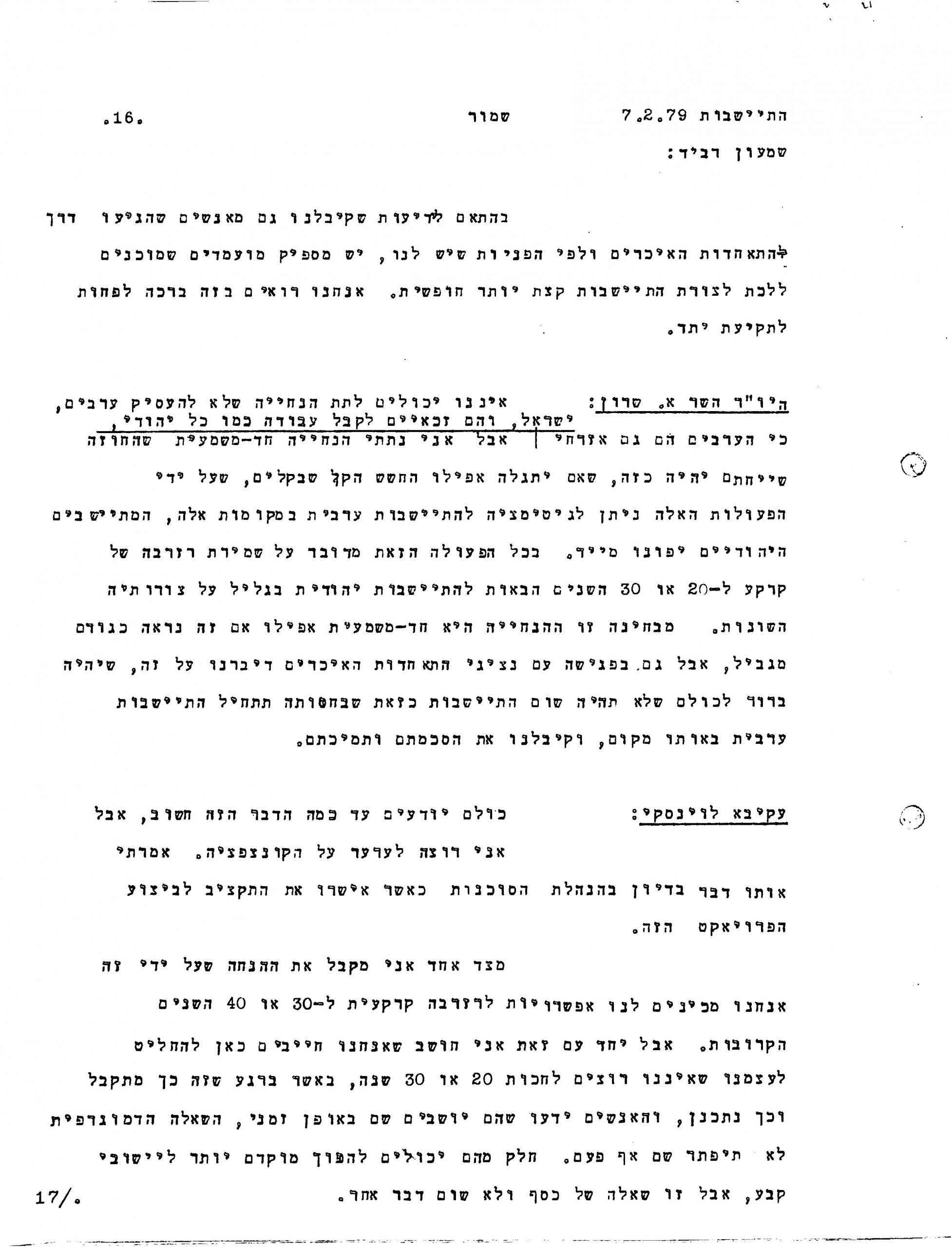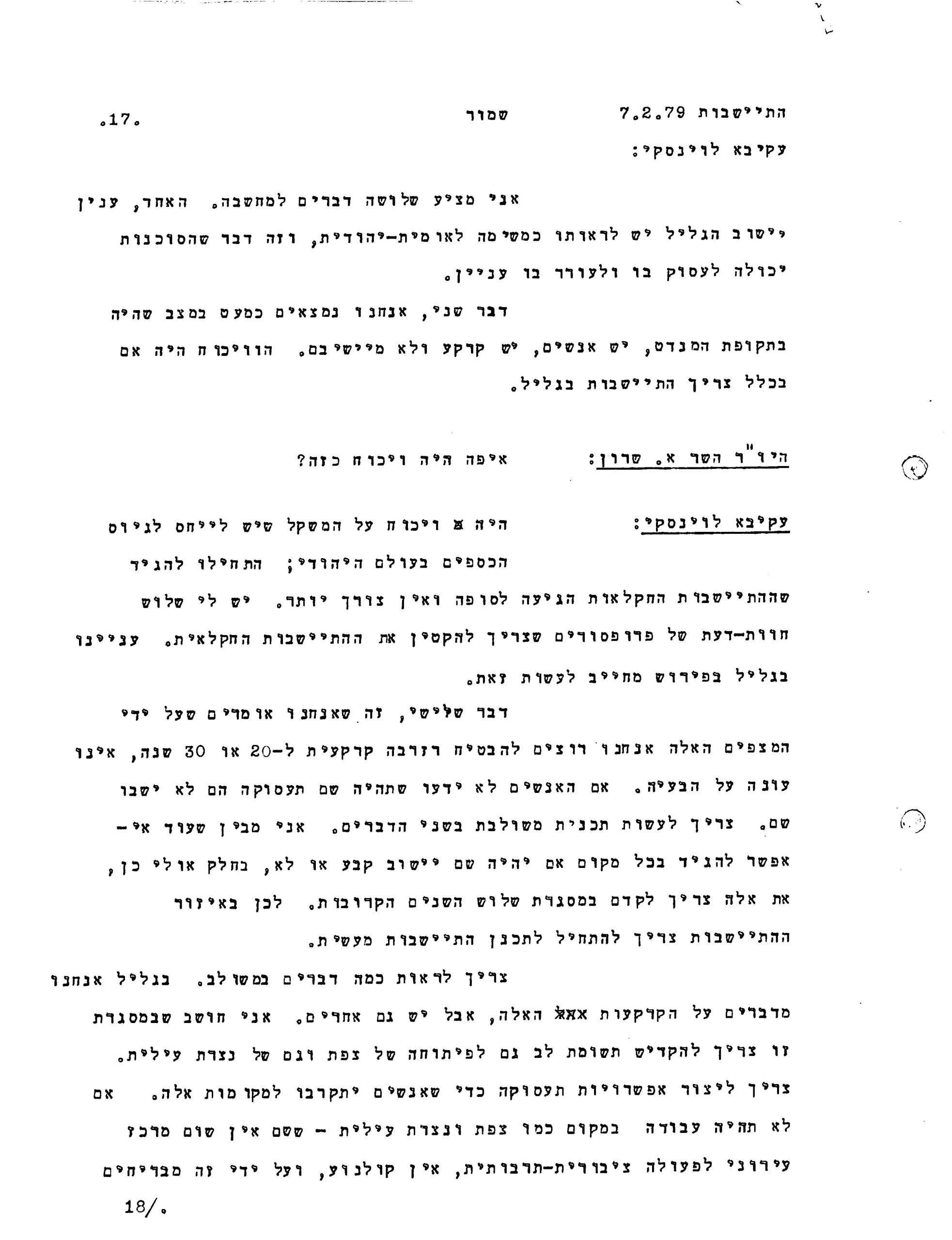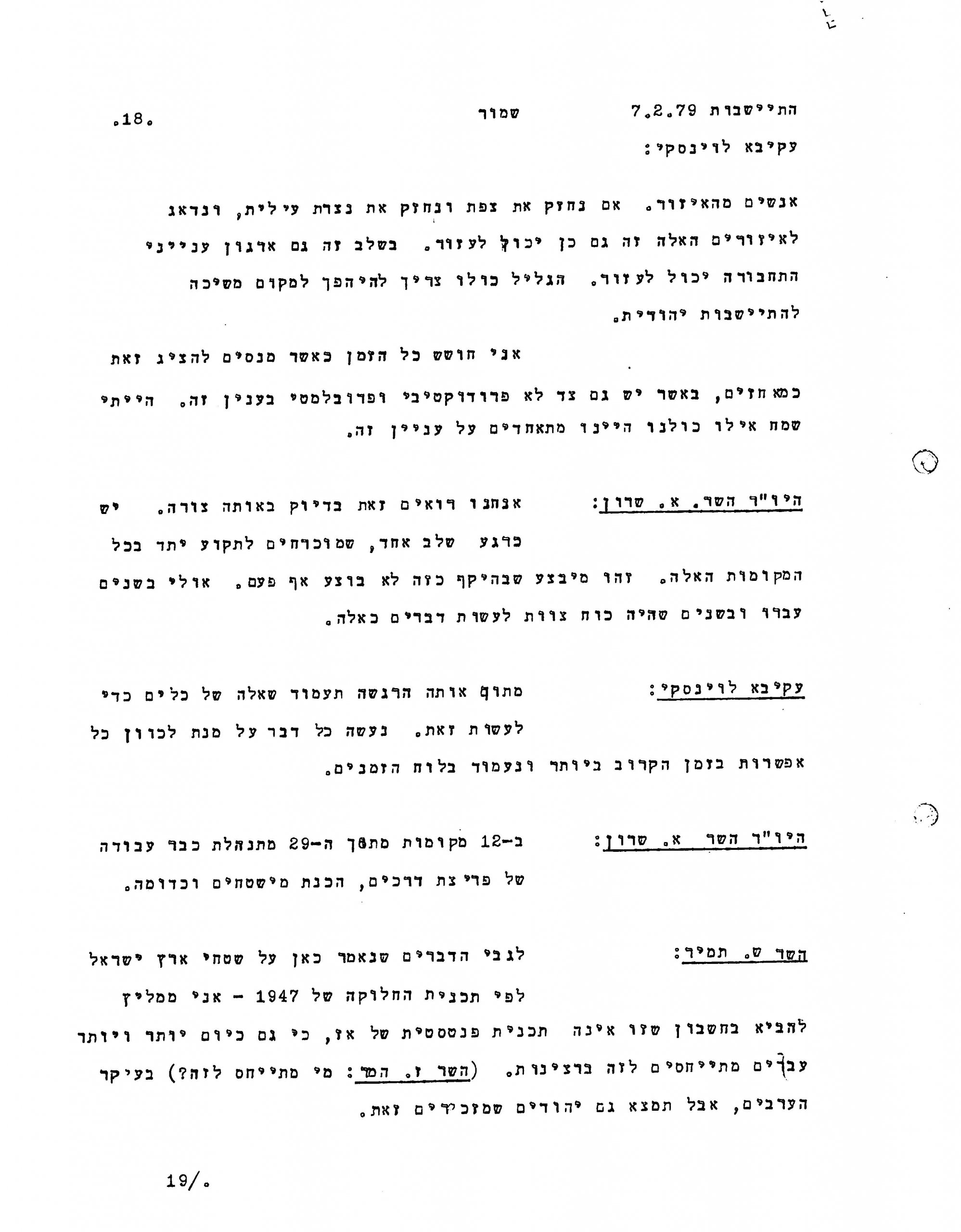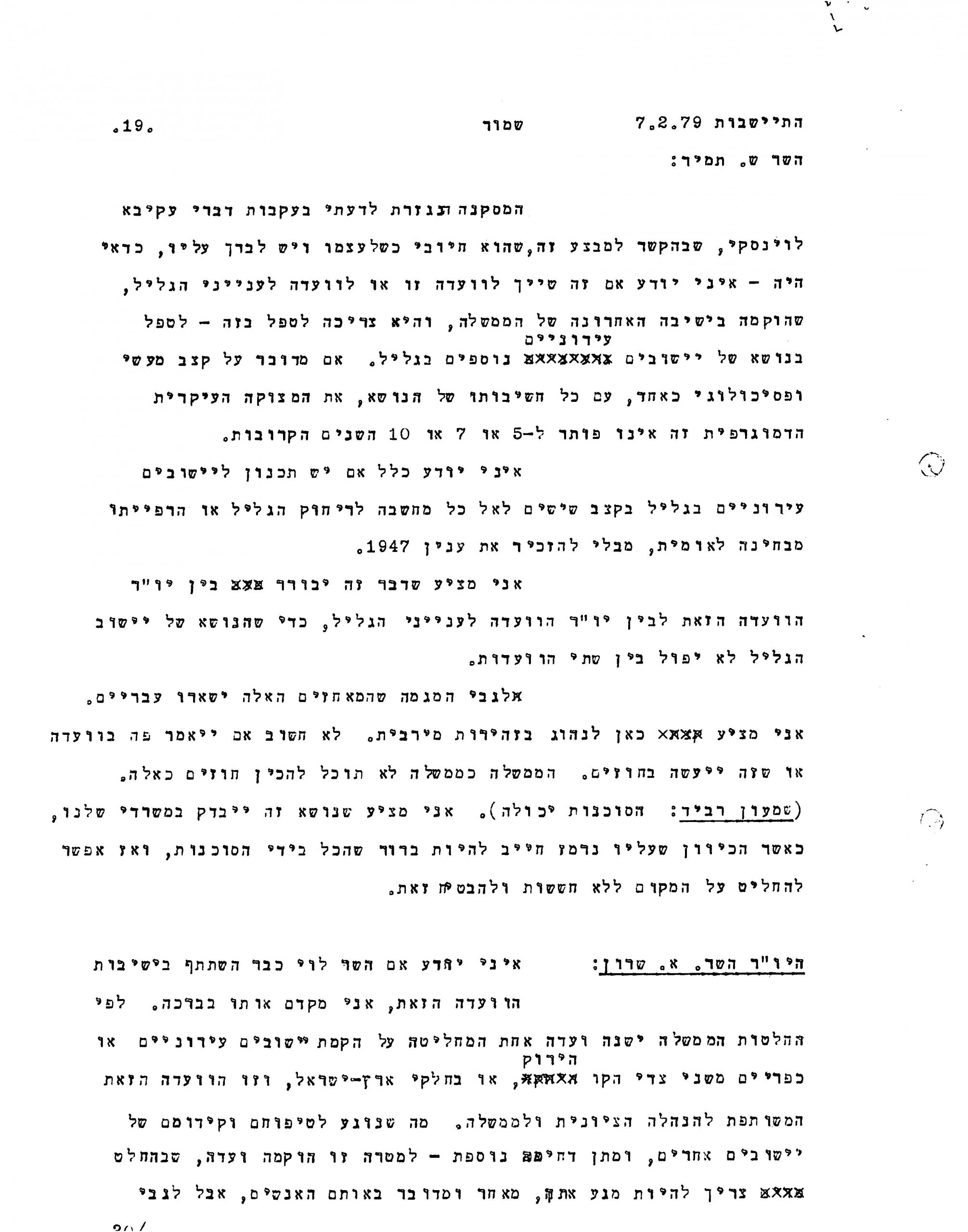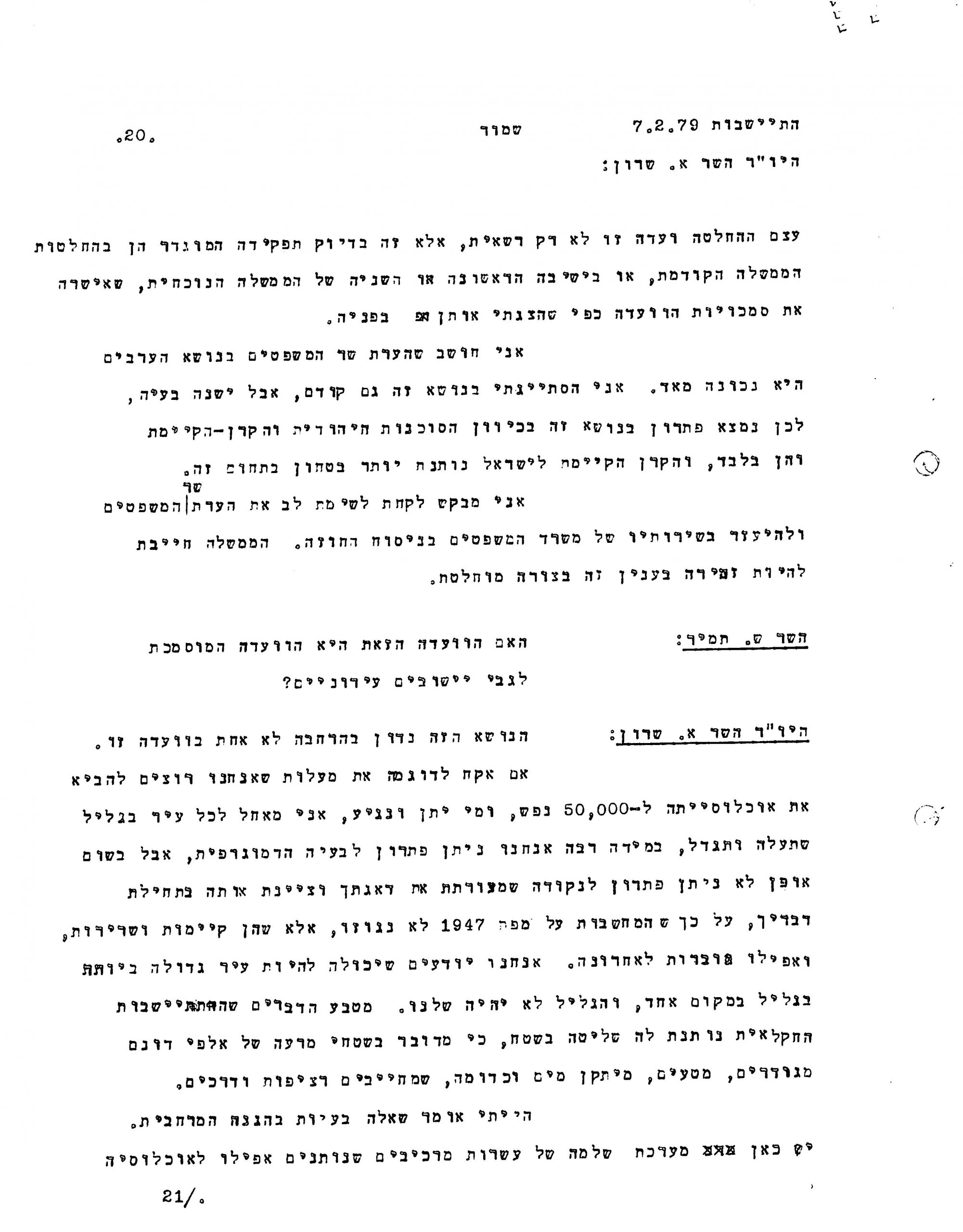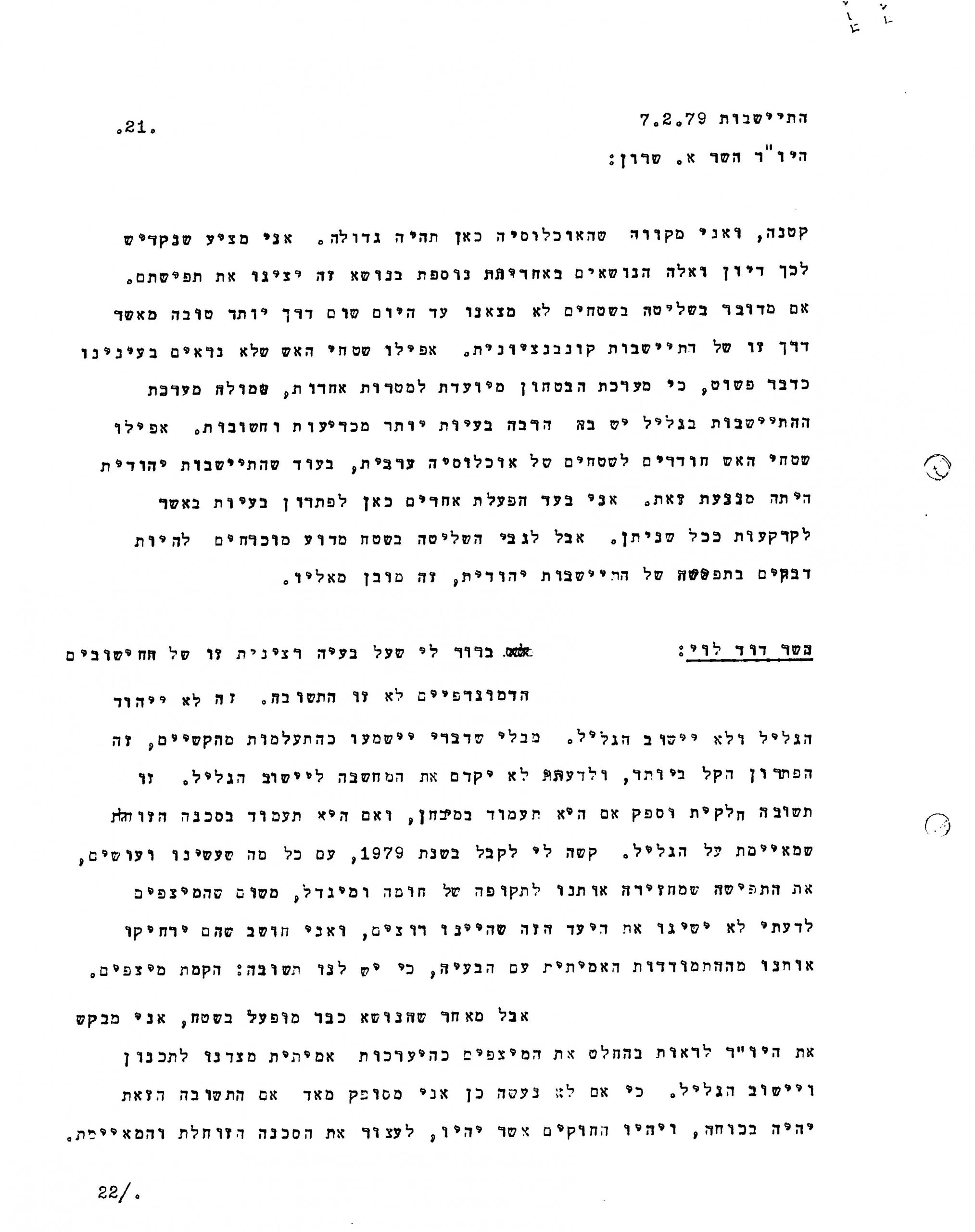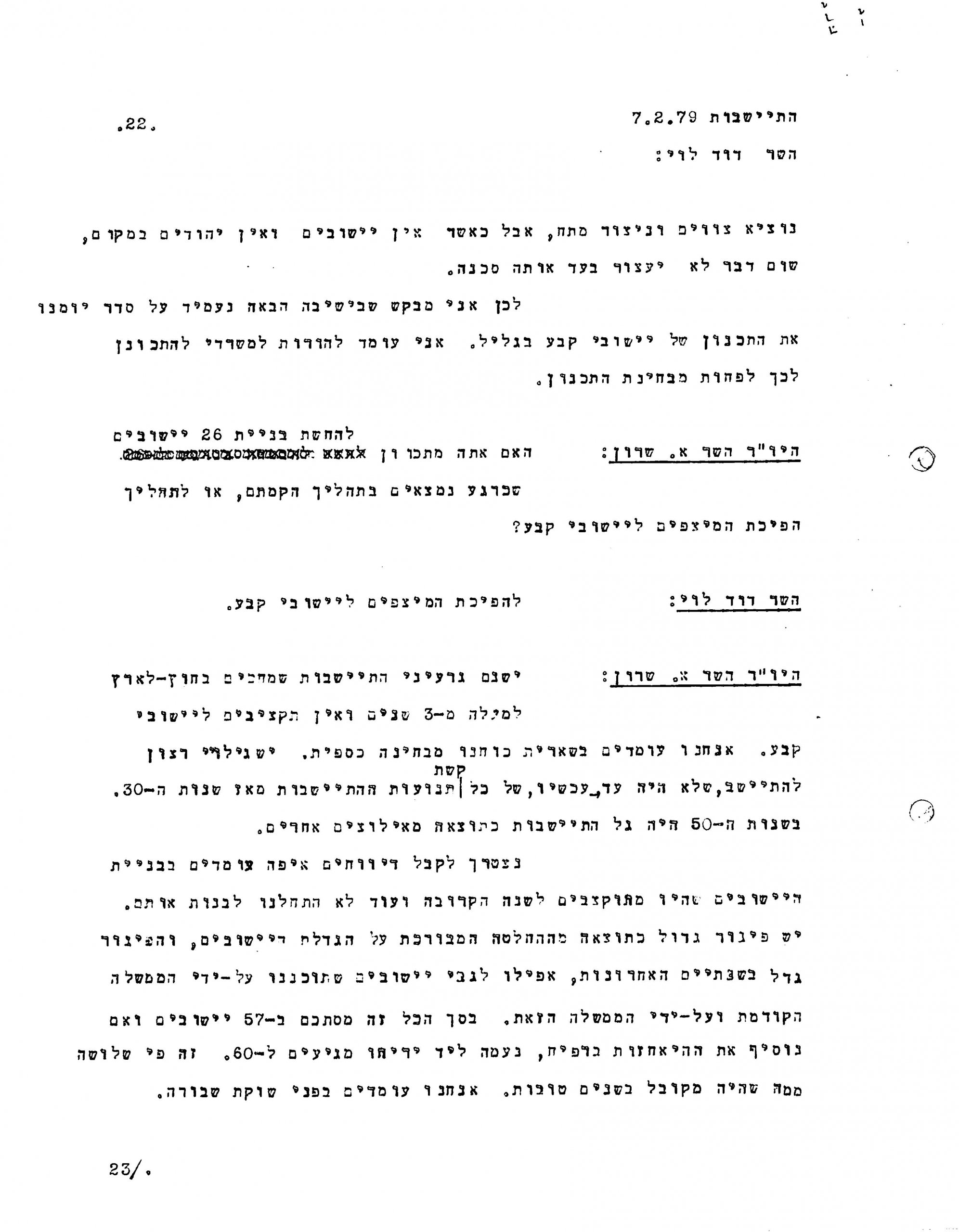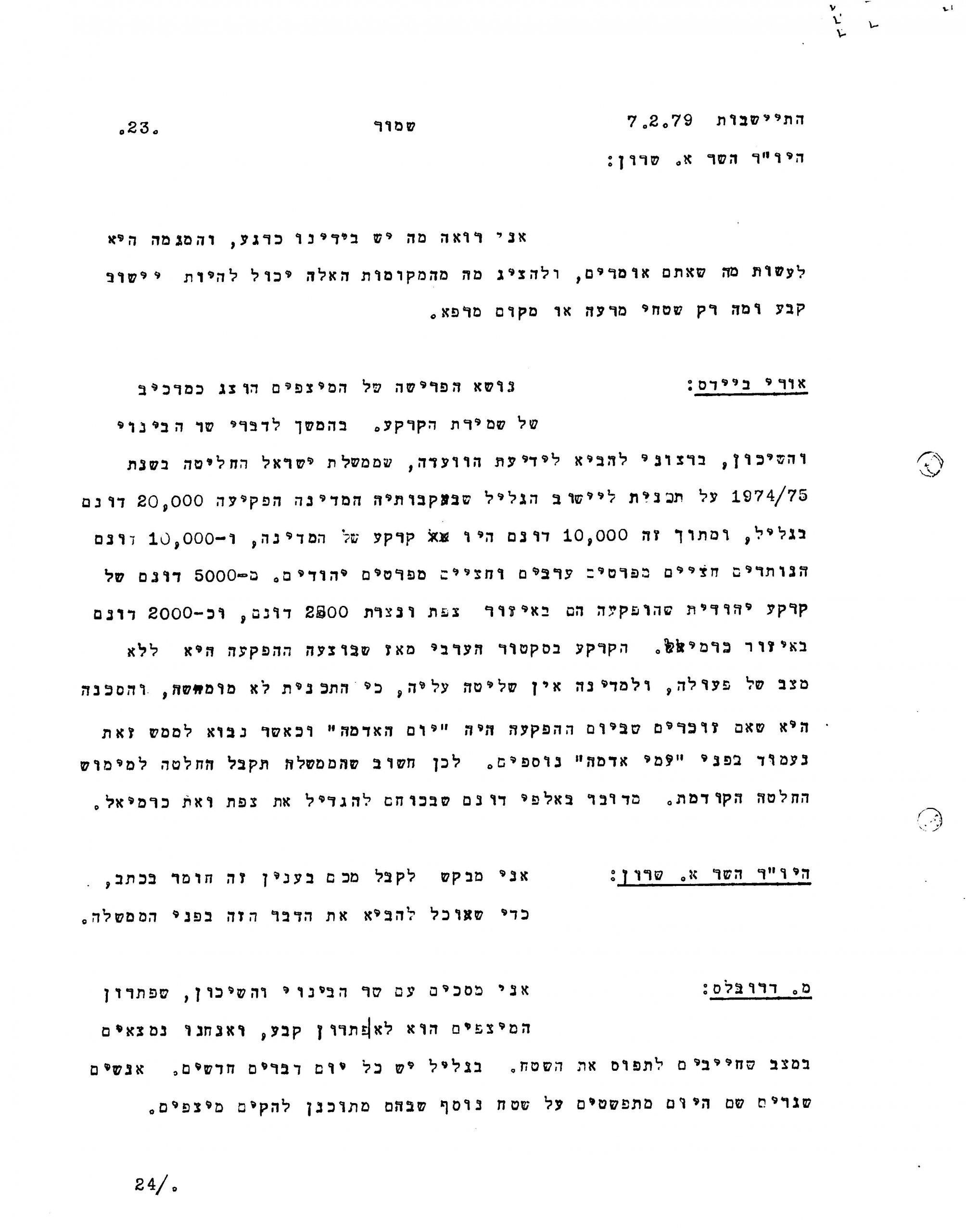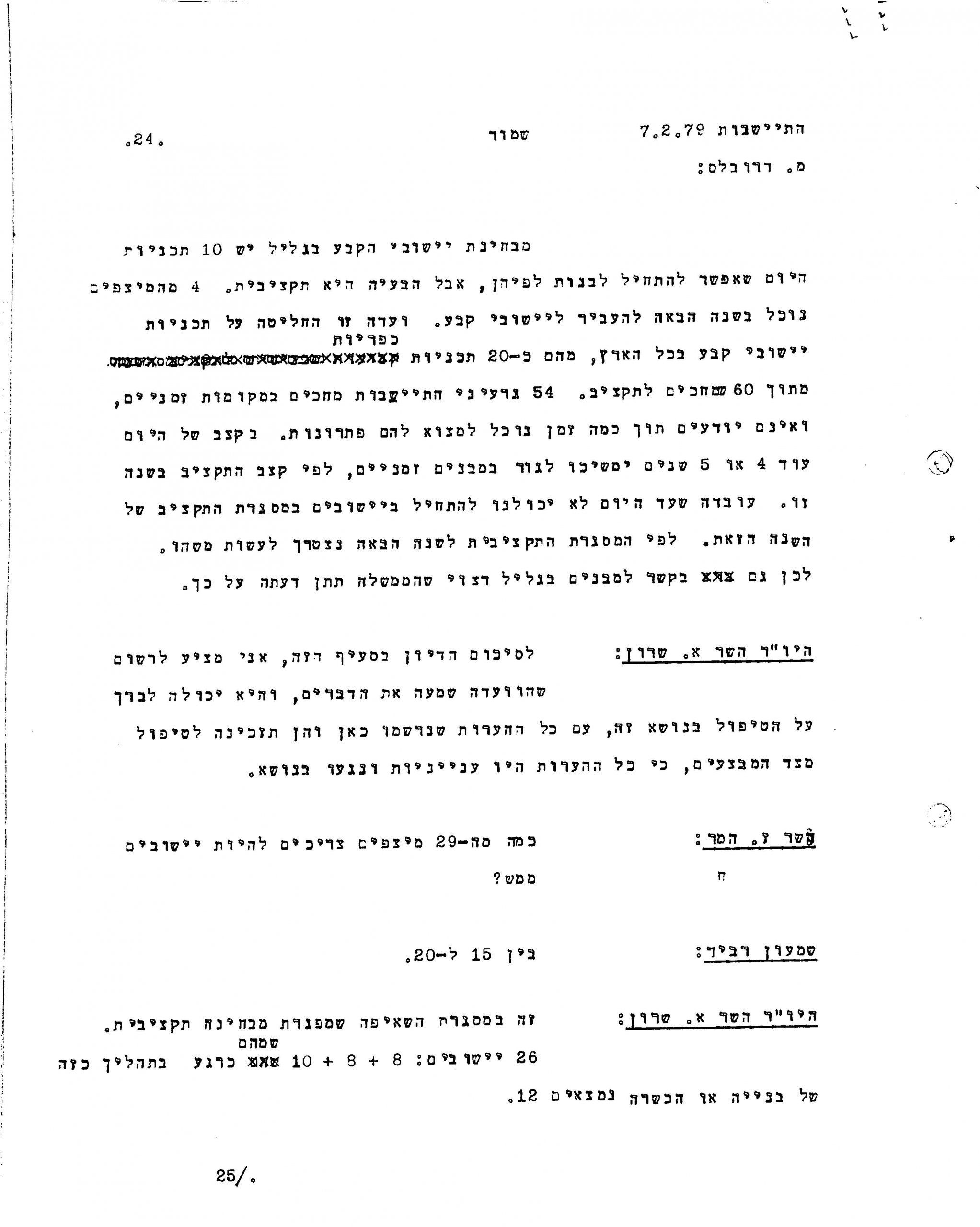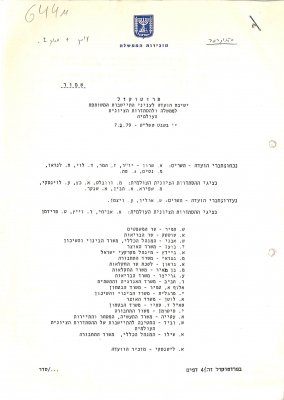A decade after abolishing the Military Rule over its Palestinian citizens in 1966, Israel resumed the expropriation of Palestinian-owned land in the Galilee. Land Day, first held on March 30, 1976, as part of the Palestinian response, has been marked every year since as a day of protest against dispossession and landgrab. Transcripts of a Settlement Committee session from February 1979, chaired by Minister Ariel Sharon offers a frank, direct depiction of Israel’s plan for the swift takeover of Galilee lands: Through mass forestation and fast-track establishment of small Israeli settlement points (“Mitzpe”), the state could secure, “land reserves for settlement activity for the next 20, 30, or 40 years.”
The question of the Galilee’s demographic future has been on the agenda of the Zionist project and the State of Israel for many years. Ample historical records, some of which are presented in Akevot Institute’s book, The Military Rule, 1948-1966: Annotated Document Collection, illustrate the central role the Military Government played in Israel’s efforts to secure a Jewish majority in the Galilee, in part through monitoring and controlling the movement of Palestinian citizens in the area, as well as concerted efforts to prevent the expansion of existing Palestinian communities and the repopulation of communities depopulated in the 1948 war. When the Military Rule was abolished in 1966, Israel continued to use other tools to address demographics in the country’s north, including mass expropriation of Palestinian-owned land.
In the first ten years after the abolition of the Military Rule, Israel avoided expropriating Palestinian-owned land. However, halfway through the 1970s, the Rabin government renewed this policy, leading to the eruption of mass protests made famous largely due to Land Day, first held by the Palestinian community on March 30, 1976, and marked every year since.
The transcripts of the joint government and World Zionist Organization Settlement Committee session held in February 1979 – three years after the first Land Day – reveal some of the founding principles of Israel’s policy with respect to the Galilee, which has come to be known as ‘Judaization of the Galilee.’
Ariel Sharon, who served as Minister of Agriculture in the Begin government, explained during the session that Israel was on the cusp of “a serious issue of concern for state land reserves remaining in our hands” in the Galilee. The concern was that land without Jewish settlements would “fall” into Arab hands and be used for their housing and agriculture needs. Therefore, Sharon explained, it was imperative to launch mass, urgent forestation in order to “secure [the land] as a future reserve.” Sharon was referring to an area of state land covering more than 40,000 dunams. In addition to forestation, a plan was devised to establish some 30 mitzpe communities. The word “mitzpe” means lookout in Hebrew, and in this context, refers to small residential communities. In the transcripts, Sharon explained that mitzpe residents would “engage in securing the territory, fencing and tree-planting,” adding the communities would serve as starting points “for the establishment of permanent settlements in these areas in the future.” According to Sharon, these actions were designed to secure “land reserves for settlement activity of different types, urban, rural, etc., for the next 20, 30, or 40 years.” Sharon further added, “We have mentioned the matter of Judaizing the Galilee on more than one occasion during our meetings, and I see the establishment of the mitzpe communities that are about to be built as one of the ways to achieve this goal.”
During the session, Committee Chair Sharon frequently mentioned forestation and mitzpe communities – terms that evoke a romantic image of Zionist pioneering, while he and other meeting attendees also often repeated the technical phrase “land reserves.” This terminology masked a substantial impediment to the government’s ambition: the lack of funding for mass settlement in the Galilee, for one, and, for the other, the fact that not enough Jewish citizens were willing to move to the Galilee and “Judaize” it by building large permanent settlements (which is why the mitzpe communities were often inhabited by soldiers from the Nachal brigade, a military unit that engaged in settlement activities). Shimon Ravid from the World Zionist Organization Settlement Division explained the mitzpe system was designed to, “separate the ability to secure land from the pace at which permanent settlements are built.” Unlike permanent settlements, mitzpe communities could be built rapidly, allowing the government to put facts on the ground without waiting for permanent settlements to be built that could accommodate a large number of Jewish residents.
The Settlement Division, which played a central role in forestation and mitzpe building in the Galilee put forward another requirement – during the discussion, its representative demanded that there be “absolutely no hiring of Arabs whatsoever” for the construction of mitzpe communities or any activity in them. Ravid said the Settlement Division was preparing a contract that “people [referring to Jewish settlers] would have to sign, that will see to the legal side of this matter as well.” Aware of the legal difficulty in drafting a contract that draws distinctions between types of citizens, Sharon clarified the government could not agree to it officially. At the same time, Sharon did state: “I gave an explicit order that the contract signed would be such that even if the faintest suspicion arises that the actions in question lend legitimacy to Arab habitation in these places, the settlers will be immediately evacuated.” Minister of Justice Shmuel Tamir, who also attended the session, advised “maximum caution,” noting the government “could not prepare such contracts.” Like Sharon, Tamir had no trouble coming up with a practical solution for the legal quandary: “The direction that has been implied must clarify that everything is in the hands of the [Jewish] Agency, and then everything can be decided on the spot without fear, so this could be guaranteed,” he told participants.
Vestiges of the proposed mitzpe contract built to keep Arabs out can be seen today in the admittance policy of most communities in the Galilee, including mitzpe communities, which makes Palestinian citizens of Israel extremely unlikely to gain admittance as residents in such communities.

